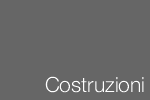In November 2015 BSI published BS EN ISO 14120: 2015, Safety of machinery. Guards. General requirements for the design and construction of fixed and movable guards.
This updates the guidance on design and selection of guards for machinery and it is going to change the way you design and adapt guarding on your machines in the future.
It is expected that ISO 14120:2015 will shortly be harmonised as a European standard EN ISO 14120, replacing EN 953 in the Official Journal (OJ) of the European Union and therefore providing a presumption of conformity with certain Essential Health and Safety Requirements (EHSRs) of the Machinery Directive 2006/42/EC.
There are many minor changes in this standard as you would expect. After some more analysis Spiers Engineering Safety will be releasing a full summary of the changes and their effects on guarding design, and this will be followed by a full comparison document; pre-register for this via the Spiers Engineering Safety newsletter to receive it first.
One of the changes relating to electrically conductive parts is explained below.
ISO 14120:2015, 5.13 Guards with electrically conductive parts
Where guards are made of electrically conductive material and used in electrically powered machines, they might need to be considered as "extraneous conductive parts of the machine" according to IEC 60204-1:2005,clause 8.
There was no corresponding clause in the outgoing EN 953, so is this a completely new requirement for machine builders?
In a word, no. The manufacturer of the electrically powered machine should have been already designing and building their machine using EN 60204-1:2006, and this is merely reflected in the clause in ISO 14120.
However, the clause given in the guarding standard states that the guard may need to be considered as 'extraneous conductive parts of the machine.' It does not take into account that the guard may already be considered as an exposed conductive part of the machine, rather than extraneous conductive parts. The determination as to how to classify the guard is dependent upon the limits of the electrical machine and where the guard is positioned in relation to it.
Risk assessment
EN 60204-1 already requires that the risks associated with the hazards relevant to the electrical equipment shall be assessed as part of the overall requirements for risk assessment of the machine. So, the designer of the machine, the person modifying the machine for integration or, in the case of adaptation, the user shall complete a risk assessment to determine what requirements are applicable. This risk assessment shall determine whether conductive parts (including guards) are either exposed conductive parts OR extraneous conductive parts:
- exposed conductive part - conductive part of electrical equipment, which can be touched and which is not live under normal operating conditions, but which can become live under fault conditions
- extraneous conductive part - conductive part not forming part of the electrical installation and liable to introduce a potential, generally the earth potential
This would require the designer to firstly determine the limits of the 'electrical machine.' An illustration of this given in figure 1 below.

Let us consider load 1: this motor is supplied by a cable with supplementary insulation. The motor would be considered as an exposed conductive part as a fault in the basic insulation of the supply cable at the motor or a fault in the motor windings would result in the motor becoming live. A protective conductor from the MET (PE terminal) to the motor would be selected, taking account of the protective device used to ensure automatic disconnection of the supply within a sufficiently short time to limit the duration of a touch voltage to a time within which the touch voltage is not hazardous.
The frame of the machine (including guards A & B) would not be considered an exposed conductive part, as the electrical machine ends at the motor. Instead it would be considered as an extraneous conductive part and, as such, the designer would have to consider whether equipotential bonding is required.
Let us now consider load 2: this time the motor is supplied by a cable with only basic insulation routed through metal trunking and attached to the guards of sections C to F. This time the motor and the guards would be considered as exposed conductive parts, as a fault in the basic insulation of the supply cable along its length up to the motor or a fault in the motor windings would result in the motor/guards becoming live. Protective conductors from the MET (PE terminal) to the motor and the guards would be selected, taking account of the protective device used to ensure automatic disconnection of the supply within a sufficiently short time to limit the duration of a touch voltage to a time within which the touch voltage is not hazardous.








































